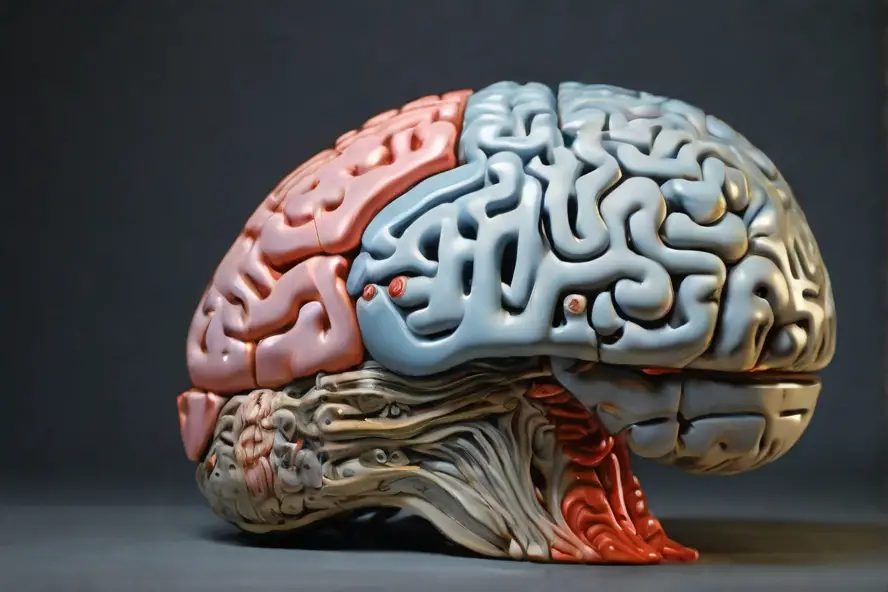
Cerebral Palsy (CP) is a neurological disorder that affects movement, posture, and muscle coordination.
It is caused by damage to the developing brain, usually before or during birth.
CP is a lifelong condition, but with proper treatment, individuals with CP can lead fulfilling lives.
In this article, we will explore the different types of CP, its causes, and whether it can be cured.
What is Cerebral Palsy?
Cerebral Palsy is a set of disorders impacting movement and muscle coordination, stemming from damage to the developing brain, typically occurring before or during birth.
According to the Centers for Disease Control and Prevention (CDC), approximately 1 in 323 children in the United States is affected by CP.
The severity of this condition varies among individuals, and it can manifest in different parts of the body.

Different Types of Cerebral Palsy
There are several different types of cerebral palsy, each with its own unique set of symptoms.
The type of CP a person has is determined by the part of the brain that is damaged and the severity of the damage.
- Read also: Understanding Spastic vs. Dyskinetic Cerebral Palsy
- Read also: A Comprehensive Guide to Hypotonic Cerebral Palsy
Spastic cerebral palsy
- Prevalence: This is the most common type, impacting around 80% of individuals with CP.
- Cause: Damage occurs in the brain’s area responsible for muscle movement control.
- Symptoms: Stiff muscles pose challenges in moving arms and legs.
Ataxic cerebral palsy
- Prevalence: Affects approximately 5% of those with CP.
- Cause: Damage occurs in the brain’s region controlling balance and coordination.
- Symptoms: Individuals face difficulties with balance, walking, and speaking.
Dyskinetic cerebral palsy
- Prevalence: Seen in about 10% of CP cases.
- Cause: Damage to the brain’s area governing muscle control.
- Symptoms: Involuntary movements, which can be slow, writhing, or jerky.
Mixed cerebral palsy
- Prevalence: Commonly observed in adults, representing a combination of two or more CP types.
- Nature: This type combines features from different CP categories.
Causes of Cerebral Palsy
Cerebral palsy (CP) is caused by damage to the developing brain that occurs before birth, during birth, or in the first few years of life.
This damage disrupts the brain’s ability to control movement, muscle coordination, balance, and posture.
While the exact cause of CP is often unknown, several factors can contribute to its development.
Before birth
- Brain malformations: Abnormal development of the brain during fetal development.
- Infections: Infections during pregnancy, such as cytomegalovirus (CMV), rubella, or toxoplasmosis, can damage the developing brain.
- Reduced blood flow or oxygen supply: This can occur due to various factors like placental problems, umbilical cord issues, or preeclampsia.
- Stroke in the womb: A blood clot or bleeding in the baby’s brain can interrupt blood flow and oxygen supply.
- Genetic factors: Certain genetic conditions may increase the risk of CP.
During birth
- Complications during delivery: Difficult labor, prolonged labor, or lack of oxygen during delivery can damage the baby’s brain.
- Premature birth: Babies born prematurely are at higher risk for CP, especially those born very early.
After birth
- Head injury: Serious head trauma in infancy, such as from a fall or accident, can damage the developing brain.
- Infections: Infections like meningitis or encephalitis can inflame the brain and cause damage.
- Metabolic problems: Severe imbalances in electrolytes or blood sugar levels can affect brain function.

Can Cerebral Palsy Be Cured?
As of now, there is no cure for Cerebral Palsy (CP).
Despite the absence of a cure, individuals diagnosed with CP can lead meaningful and satisfying lives with the right treatment and support.
The primary emphasis in managing CP revolves around addressing symptoms and enhancing overall quality of life.
While a definitive cure remains elusive, advancements in treatment approaches offer hope and opportunities for improved outcomes.
Comprehensive care, tailored to individual needs, plays a pivotal role in empowering those with CP to navigate life’s challenges and maximize their potential.
Common Treatment Approaches
Physical therapy
Physical therapy constitutes a cornerstone of CP treatment.
It involves a range of exercises and activities designed to enhance muscle strength, flexibility, and coordination.
By targeting these areas, physical therapy aims to improve overall mobility, balance, and posture, enabling individuals with CP to navigate daily activities with greater ease and confidence.
Occupational therapy
Occupational therapy focuses on equipping individuals with CP with the necessary skills for independent daily living.
This includes activities such as dressing, eating, and grooming.
Additionally, occupational therapists assist in the utilization of assistive devices like wheelchairs or communication aids, facilitating increased autonomy and participation in daily routines.
Speech therapy
Speech therapy plays a crucial role in addressing communication challenges commonly encountered by individuals with CP.
Through specialized techniques and exercises, speech therapists help improve speech clarity and language development.
Furthermore, speech therapy can address swallowing difficulties, enhancing overall oral function and quality of life.
Medication
While medications cannot cure CP, they are often employed to manage specific symptoms associated with the condition.
For instance, medications may be prescribed to alleviate muscle stiffness or seizures.
It is important to note that medications may entail potential side effects and should be administered under the guidance of a healthcare professional.
Surgery
Surgical interventions may be recommended in select cases to address mobility issues or alleviate severe muscle stiffness.
Surgical procedures aim to enhance mobility and functionality, although they do not constitute a cure for CP.
It is essential to weigh the potential risks and benefits of surgery and engage in thorough discussions with healthcare providers to make informed decisions regarding treatment options.

- Read also: Effects And Causes of Cerebellum Damage
- Read also: Medulla Oblongata Damage
Conclusion
Cerebral Palsy is a lifelong condition that affects movement, posture, and muscle coordination.
While there is no cure for CP, with proper treatment, individuals with CP can lead fulfilling lives.
Treatment approaches for CP focus on managing symptoms and improving quality of life.
Physical therapy, occupational therapy, speech therapy, medication, and surgery are all common treatment approaches for CP.
FAQs
While there is no guaranteed way to prevent CP, there are some steps that can be taken to reduce the risk, such as getting proper prenatal care and avoiding risk factors like smoking and alcohol during pregnancy.
While CP is usually diagnosed in childhood, it is possible for adults to develop CP as a result of brain damage from injury or illness.
With proper treatment and support, many individuals with CP can live independently. However, the level of independence will depend on the severity of the condition and the individual’s specific needs.


